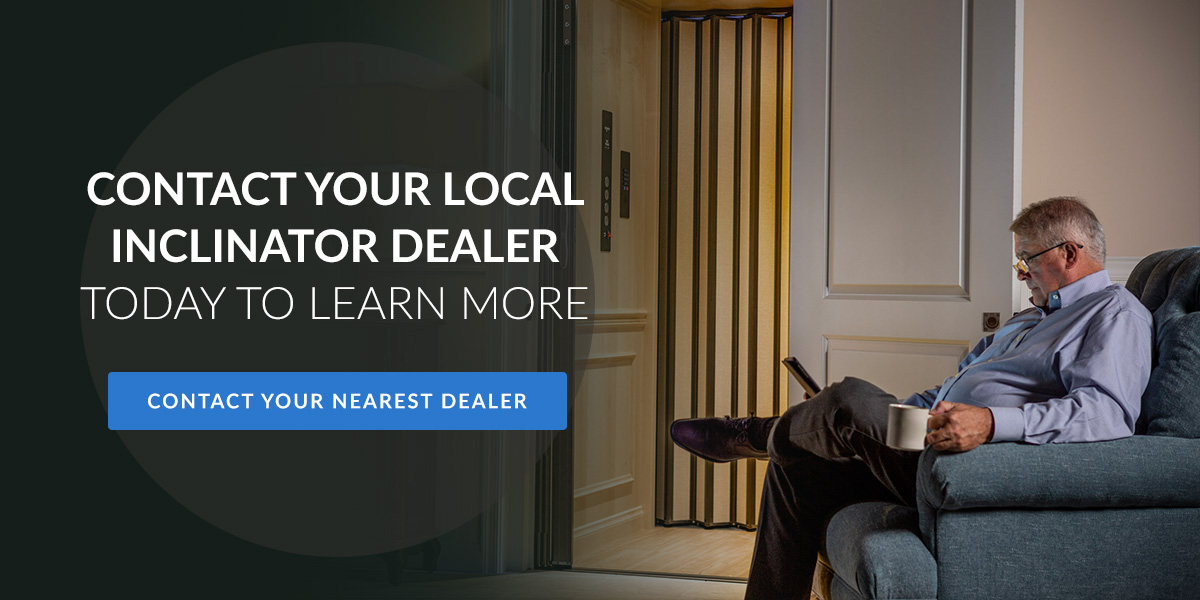If you’re facing a loss of mobility for the first time, or you’re simply planning to thrive in place at home as you age, you’re probably wondering what options you have to make your home more accessible for the use of wheelchairs, motorized scooters, or walkers. These assistive devices can indeed be problematic to use comfortably within many traditionally designed homes that have complex floorplans, steep stairways, and perhaps only a single bathroom located on an upper floor.
Unfortunately, countless Americans believe that the architectural challenges their houses present cannot be overcome. They resort to moving from their beloved homes at a time when such a disruption in their lives is the last thing they need. The good news is that you don’t have to give up on your home. There are many types of renovations, both small and large, that can make your home much more livable with mobility issues. Let’s take a look at some of the more significant (but realistic) changes that you can make.
Stair Lifts and Ramps
You may be familiar with stair lifts, as they’re often a feature in older public buildings that house essential service offices, or perhaps you even know someone who has added a lift in their home. These systems typically feature a seat that moves along a motorized rail that’s physically attached to a staircase – simple as that. They can help you climb stairs if you have minor physical challenges that make falls a concern, but they’re not quite as convenient for those who require general mobility assistance.
If you rely on a walker, you will need to be sure that you have one located on each level of your home, as the stair lift requires a transition between your mobility device at both the bottom and top of the stairs. This would be similar for wheelchairs, of course, though there is the added complication of transitioning from seat to seat at both ends of the staircase, which can pose a significant safety hazard. In the end, stair lifts are not very user-friendly for those who rely on mobility aids to move around. While they are often quite affordable and widely available from many manufacturers, quality and reliability can be a concern. They are also not too aesthetically pleasing and take up valuable space in stairwells.
Ramps are excellent, low-cost additions that you can make both inside and outside of your home, but they tend to take up a considerable amount of physical space. Incline angles cannot be too steep, or the ramp will be just as impassable as a flight of stairs with a walker, wheelchair, or even a motorized scooter.
The US government-supported ADA (Americans with Disabilities Act) standards require a 1:12 slope for ramps. This equates to 1 inch of vertical rise for every 12 inches of ramp length to achieve an incline angle of about 4.8 degrees. While the ADA does not apply to private homes, this requirement is a good rule of thumb to follow when constructing ramps around your house. As you can see, the length of a ramp needed to clear even a few steps may be challenging to build based on space constraints. Luckily there are better solutions with fewer drawbacks.
Vertical Platform Lifts
Typically installed on the exterior of your home, vertical platform lifts allow walker, wheelchair, and scooter users to safely come and go as they please. They are reliable and simple to operate.
With a vertical platform lift (sometimes abbreviated “VPL”), you can forget all the headaches associated with building ramps, which begin with the inconveniences surrounding construction and require the often frustrating considerations for space that we just discussed. And, ramps must also be regularly maintained depending on the material they’re made from. Wood decking needs to be painted, stained, or sealed to protect it from the elements, and concrete can crack from ground settling or extreme shifts in temperature. Vertical platform lifts offer many advantages and make life easy instead of creating another thing to worry about around the house.
Home Elevators
There’s no denying it. Installing an elevator in your home is the best possible option for solving accessibility problems. As we discussed, stair lifts have many tradeoffs, and they’re not appropriate for all users. A home elevator can be easily and safely used by anyone, whether they have mobility challenges or not. Both you and visitors to your home will find your elevator to be convenient and a significant asset.
However, what about cost? And, aren’t elevators way too large to fit in most houses?
Home elevators are indeed an investment, but it’s one that many people now feel is justified, and certainly within reach for plenty of homeowners. You probably remember the days when having an elevator in your home was something of a status symbol reserved for wealthy owners of grand mansions. Those days are gone.
While most owners of home elevators today indeed take pride in this helpful “upgrade,” the relative affordability will likely surprise you. Modern home elevators like our Elevette® are almost infinitely customizable, so your budget, as well as your unique space, is accommodated without issue. Installing an elevator adds real value to your home if you find yourself considering resale in the future.
On the subject of space, did you know that you only need space the size of a standard closet to fit an elevator in your home? Home elevators are not like the commercial elevators you probably have in mind, like those in hospitals and other public buildings – they’re much more compact. Depending on building code rules, floor space in a typical home elevator is usually less than 15-18 square feet. They’re designed to fit only as many as three or four adults with standing room only, or two adults with one in a wheelchair. As you can see, adding an elevator to your home is not such an “out there” idea after all!
Here at Inclinator, we want to help you remain in your home and retain your independence even if you are facing the uncertainty that often accompanies mobility issues. We would love to discuss your questions about whether a new home elevator is right for you and your home – get in touch today or find an Inclinator dealer near you.
- 7 Signs You Need a Residential Elevator - December 7, 2023
- Home Investments That Help You Age in Place More Comfortably - October 12, 2023
- 3 Misconceptions About Home Elevators - December 9, 2021







